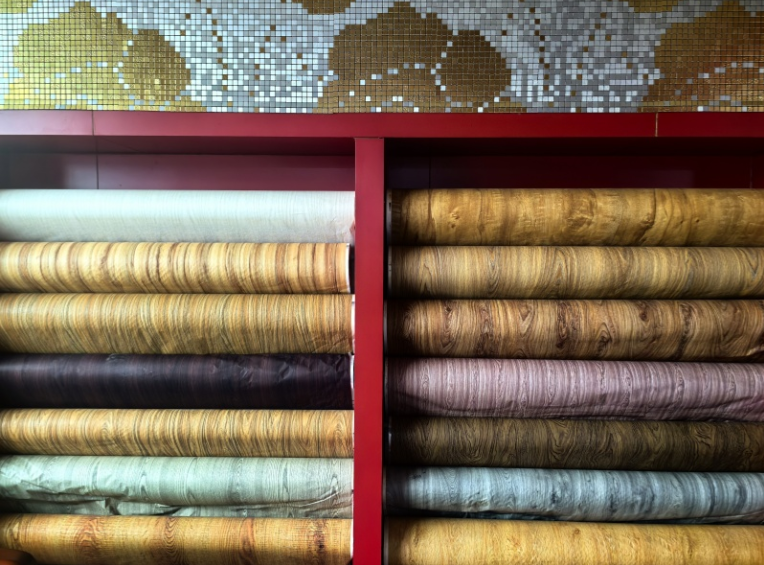Jun. 10, 2025
In today’s competitive landscape, aesthetics play an increasingly vital role in product success—whether you're manufacturing architectural components, consumer goods, or commercial fixtures. Wood grain transfer films offer a powerful way to combine the natural warmth of wood with the durability and cost-efficiency of powder-coated metal. However, not all wood grain patterns resonate equally across industries or target markets.
Choosing the right wood grain pattern is not just about visual appeal—it's about aligning your product’s look with market expectations, cultural preferences, and end-use performance. This guide explores how to select the ideal wood grain transfer film based on market trends, material compatibility, and application scenarios.

Wood grain transfer films are typically created using sublimation printing technology on high-temperature transfer films. These films are then applied to powder-coated surfaces to create decorative finishes that closely resemble real wood.
Common wood grain patterns include:
Oak: Rich in texture and highly versatile.
Walnut: Dark and elegant, often used in luxury segments.
Teak: Popular for outdoor and marine-themed applications.
Cherry: Smooth and warm, favored in interior décor.
Maple: Light and clean, great for modern minimalist designs.
Pine: Rustic and traditional, suitable for home improvement products.
Different regions and customer segments have distinct aesthetic preferences. Understanding cultural associations with wood types is crucial.
| Region | Preferred Wood Styles |
|---|---|
| North America | Cherry, Oak, Walnut |
| Europe | Ash, Beech, Teak |
| Middle East | Dark Walnut, Mahogany |
| Southeast Asia | Teak, Rosewood |
| Japan & Korea | Light Maple, Bamboo, Oak |
Building Façades: Bold grains like oak or teak.
Furniture: Sophisticated grains like walnut or cherry.
Automotive Interiors: Uniform grains like maple or mahogany.
Retail Displays: Exotic patterns like zebrawood.
Use finer texture grains to prevent distortion.
Ensure consistent directionality for visual alignment.
Choose high-definition films for complex surfaces.
Use reclaimed or rustic wood grains for sustainability branding. Choose refined patterns like walnut or rosewood for premium products.
Popular Patterns: Teak for outdoor luxury villas, Walnut for corporate buildings, Light oak for modern housing.
Best Choices: Rustic cedar, Dark teak, Weathered wood.
Suggested Finishes: Satin cherry, Ash and maple, Wenge or walnut.
Top Picks: Glossy mahogany, Matte walnut, Dark oak.
High-Impact Patterns: Zebrano, Dark cherry, Blonde birch.
| Wood Grain Pattern | Recommended Base Coat |
|---|---|
| Walnut | Beige or brown |
| Oak | Light yellow or cream |
| Teak | Sandy brown |
| Cherry | Reddish beige |
| Maple | Pure white or off-white |
Using bold grains on small products.
Ignoring matte vs. gloss surface impact.
Applying indoor-grade film outdoors.
Overlooking regional aesthetic norms.
Q: Can I customize wood grain patterns for my brand?
A: Yes, digital printing enables low MOQ and full design control.
Q: How long do the wood grain finishes last?
A: Over 10 years outdoors with proper powder/film combo.
Q: Are there sustainable options?
A: Yes, many eco-inks and recyclable films are available.
3D embossed films with tactile surfaces.
Color-shifting or interactive wood finishes.
Smart coatings with hygiene or anti-fingerprint features.
Digital customization for regional batches.
Selecting the right wood grain pattern is a strategic decision that blends aesthetics, functionality, and market fit. By considering regional preferences, application context, product geometry, and powder coating compatibility, manufacturers can elevate their product offering and meet customer expectations with precision.
Whether you're producing architectural panels, furniture, automotive parts, or consumer goods, the right wood grain transfer film can transform your powder-coated products into high-value, design-forward components.
Looking for a reliable supplier of premium wood grain transfer films tailored to your market? Trust NB Technology—your expert partner in surface aesthetics and sublimation innovation.
Navigation
+86 158 1691 5404
+86 757 8271 3937
+86 757 8271 3937
No. 10 Industry Huacongsiyue Village, Shishan Town, Nanhai District, Foshan, Guangdong Province, China